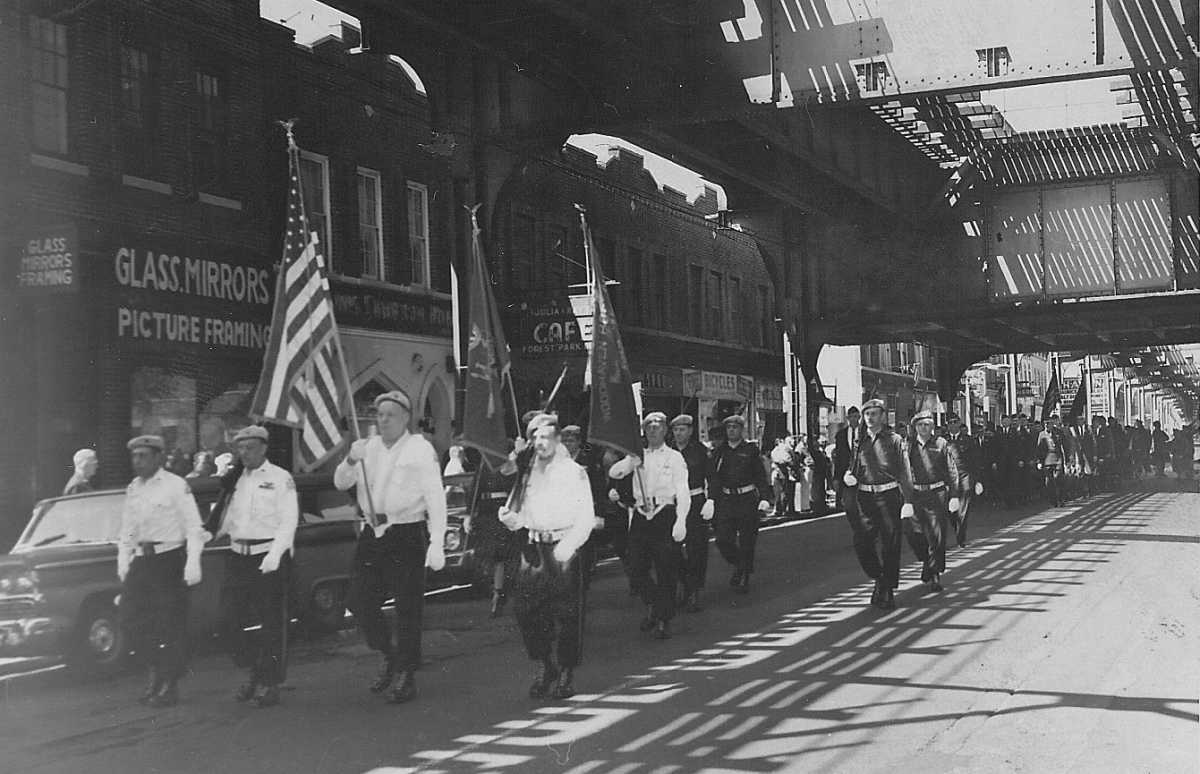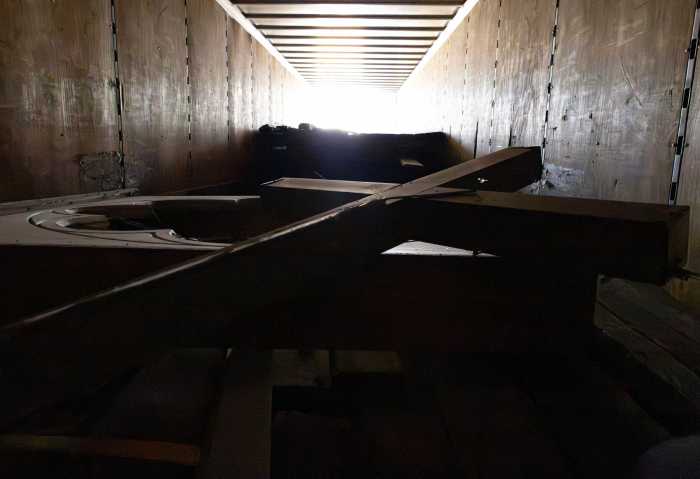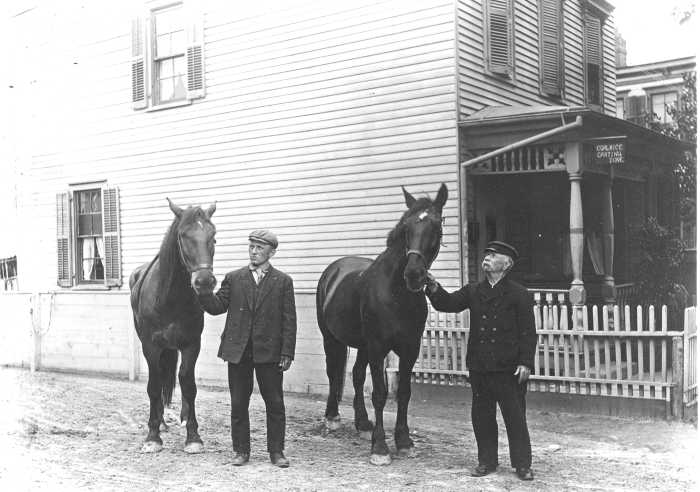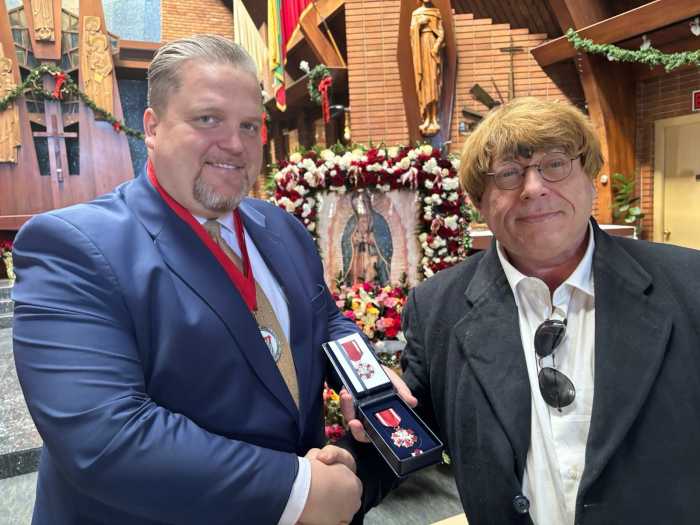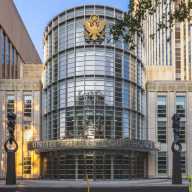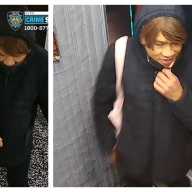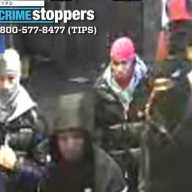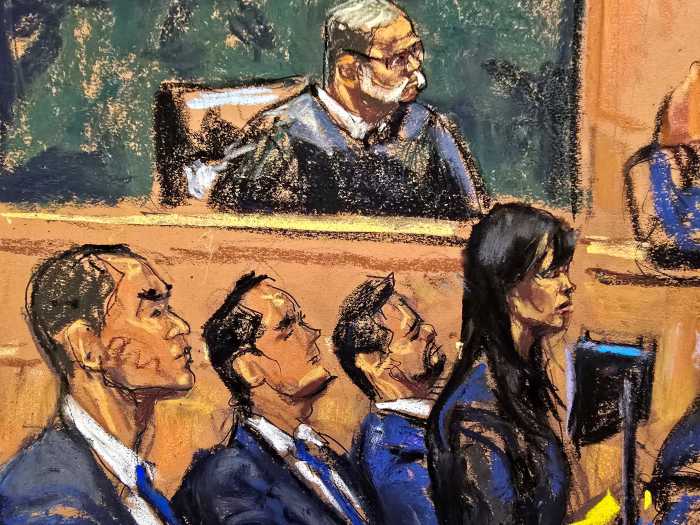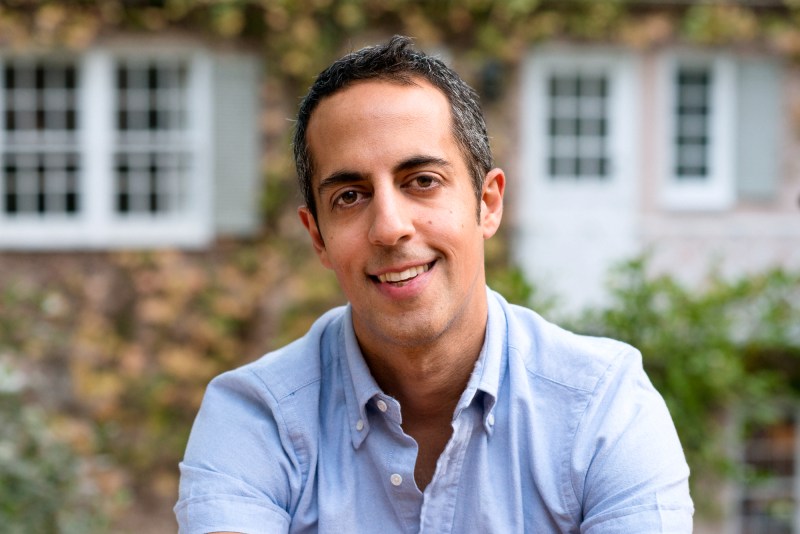Memorial Day on the last Monday in May pays honor to the men and women who lost their lives while serving in the military. American Legion Post 118 on 91st Street and 89th Avenue is the site of one of the many memorials in Woodhaven to those who lost their lives defending our country.
In the front yard of Post 118 is a large granite monument with a plaque containing the names of young men who lost their lives in World War I. This large monument once sat in Forest Park, where Memorial Day parades used to conclude, but it was moved to the American Legion when the new post building was built in the early ’40s.
Each year, American Legion Post 118 turns their front yard into a miniature cemetery covered in markers dedicated to those no longer with us. And that’s the point of Memorial Day: to remember.
In 2018, the family of Air Force Lieutenant Harry Schmitt returned to Woodhaven where a cross bearing his name has been displayed every Memorial Day since he was killed in a plane crash 60 years earlier.
Another monument to the war dead is on 84th Street and 91st Avenue in Lieutenant Clinton L. Whiting Square, also known as “The Rock.” Erected in the late 1920s, it memorializes a local lad who died in World War I. The local VFW, which was just a few houses away on 91st Avenue, was also named after Lieutenant Whiting.
Another monument sits on Forest Parkway and Jamaica Avenue and was erected in the early 1950s to honor local youth killed in World War II. For many years, this was an important stop for Memorial Day parades, and they even used to perform 21-gun salutes at this location.
Yet another monument is the rediscovered Memorial Trees of Woodhaven, which run along Forest Park Drive from Park Lane South past Oak Ridge and toward the Forest Park Carousel. These trees were planted for local soldiers who lost their lives in World War I.
Family members and residents used to decorate the trees with wreaths and patriotic ribbons on Memorial Day, a tradition that faded away once the granite monument was moved and Memorial Day parades no longer ended in the park.
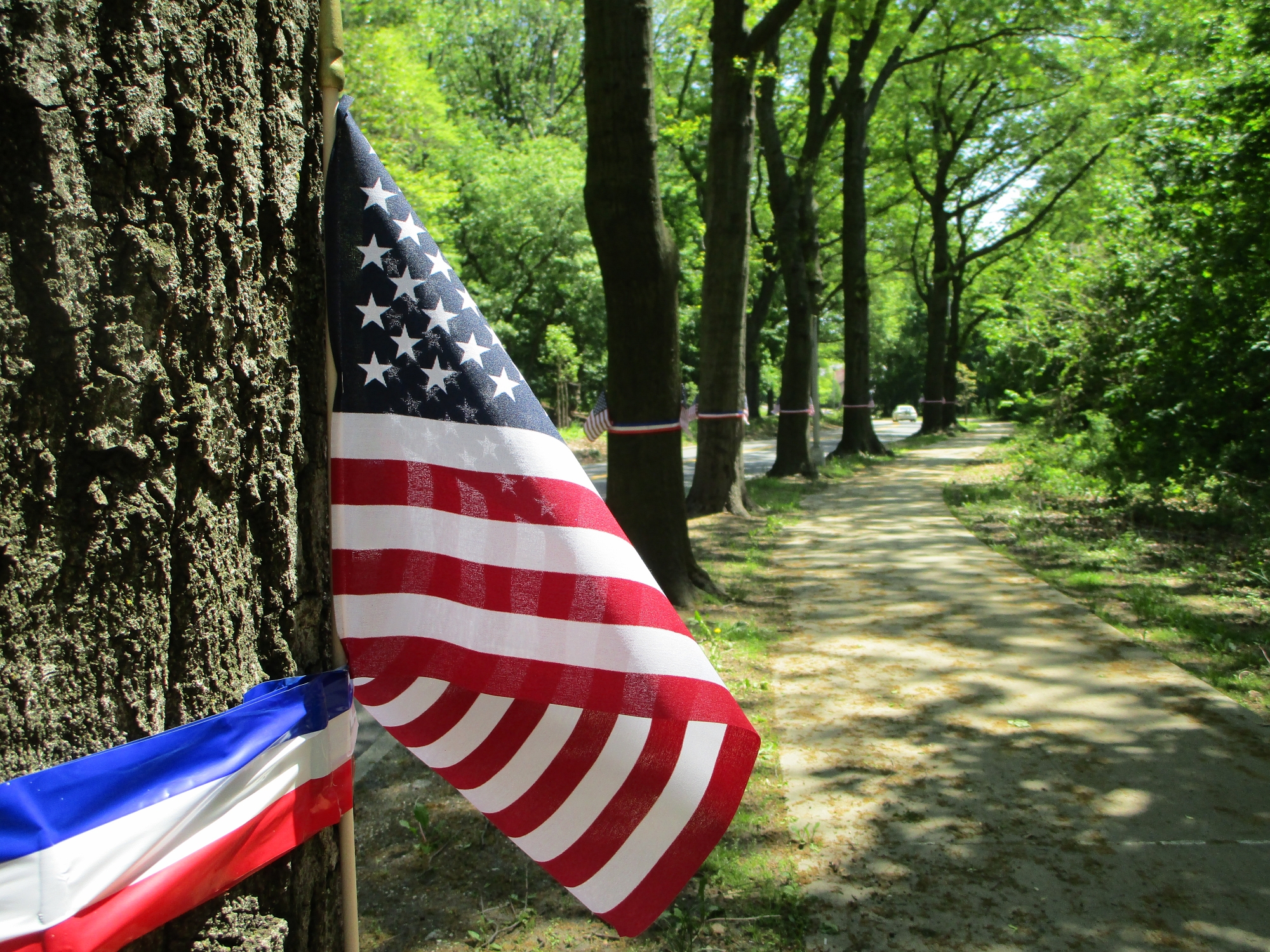
The Woodhaven Cultural & Historical Society and American Legion Post 118 Auxiliary revived the act of decorating the trees back in 2015, and it has remained a yearly tradition since then, and they will be decorated again this year. East of the trees along Forest Park Drive sits Private First Class Lawrence Strack Memorial Pond, named after the first local youth killed in Vietnam.
Another monument is a location we’re all familiar with, but might not realize it was dedicated to the war dead. Victory Field was built and dedicated to “the unknown soldier of World War I.”
Inside St. Thomas the Apostle Church is another monument dedicated to the war dead of Woodhaven. Brass plaques with the names of young men from the parish who died in both World Wars used to be outside on the church wall, but when one of the plaques was stolen the other was moved inside. The missing plaque was recreated through the efforts of Woodhaven resident and veteran Joe Virgona and returned to the church in 2009.
And two more memorials sit right on the border of Woodhaven.
Father Lynch Memorial Triangle was rededicated a few years ago. The triangle sits on the Ozone Park side of Atlantic and Rockaway and was dedicated in honor of Father Lawrence E. Lynch, a local priest killed at the Battle of Okinawa.
And nearby, at the intersection of Rockaway and Elderts Lane in Woodhaven, sits Legion Square, an area dedicated to the American Legion in 1930. Though not explicitly dedicated to any soldiers that were killed, the triangle within the square was dedicated to the American Legion for memorial purposes and for many years, Woodhaven’s Memorial Day parades began here.
Over time, the Legion Square name faded from memory, but now that it’s been rediscovered by the Woodhaven Cultural & Historical Society, American Legion Post 118 is seeking to rededicate the square and bring back the name Legion Square.
Woodhaven has always remembered and honored those that served and, as you can see, there are memorials stretching from one end of the neighborhood to the other.

